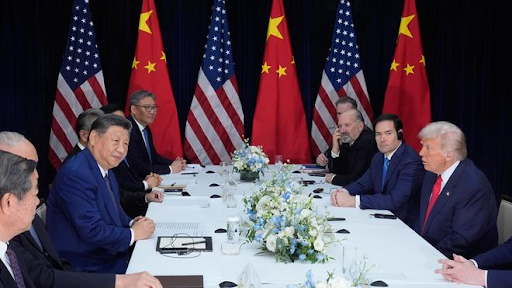Description

Copyright infringement not intended
Context:
- On June 26, S. President Joe Biden along with his G7 allies unveiled the Partnership for Global Infrastructure and Investment (PGII), largely seen as a counter to China’s multi-trillion dollar Belt and Road Initiative (BRI).
More on the news:
- All PGII projects will be driven by “four priority pillars that will define the second half of the 21st century”.
- Tackling the climate crisis and ensuring global energy security, bolstering digital information and ICT networks, promoting gender equality and equity, and lastly, to build and upgrade the global health infrastructure.
- A PGII project has been announced in India. On the other hand, India has stayed away from China’s BRI, being wary of Beijing’s aim to increase its influence in the Indian Ocean Region.
What is the PGII?
- The West has been sceptical of the BRI, since it was launched in 2013 by President Xi Jinping, as it was considered to be part of China’s larger strategy to increase geopolitical influence in Asia and other developing countries.
- The U.S., along with G7 partners the U.K., Japan, France, Canada, Germany, Italy, and the European Union (EU), had in 2021 announced the launch of the Build Back Better World (B3W) with the aim of narrowing the $40 trillion infrastructure gap in the developing world.
- PGII is therefore, a relaunch of Mr. Biden’s B3W plan.
- PGII is a “values-driven, high-impact, and transparent infrastructure partnership to meet the enormous infrastructure needs of low and middle-income countries and support the United States’ and its allies’ economic and national security interests”.
- The G7 members aim to collectively mobilise $600 billion by 2027 to invest in sustainable and quality infrastructure projects in developing countries, including India, and strengthen global supply chains.
- In India, the U.S. DFC will invest up to $30 million in Omnivore Agritech and Climate Sustainability Fund 3, an impact venture capital fund that invests in entrepreneurs building the future of agriculture, food systems, climate, and rural economy in India.
How does it compare to China’s BRI?
- The Belt and Road project was started to revive connectivity, trade, and infrastructure along what was China’s ancient Silk Road.
- China had announced a two-pronged approach of building a Silk Road Economic Belt on Land and a maritime 21st century Silk Road.
- The project initially aimed to strengthen connectivity with Southeast Asia but later expanded to South and Central Asia, Africa, Europe, and Latin America, with Mr. Xi saying it would “break the bottleneck in Asian connectivity”.
- The G7 meanwhile has specifically touted the PGII as a values-based plan to help underfunded low and middle-income countries meet their infrastructure needs.
- PGII has laid focus on climate action and clean energy, while China has built large coal-fired plants under BRI along with solar, hydro, and wind energy projects.
- While the G7 has pledged $600 billion by 2027, Morgan and Stanly estimate that China’s overall funding for BRI by that time could reach $1.2 to 1.3 trillion dollars with the actual funding being higher.
- Under the PGII, large private capital will be also mobilised while China’s BRI is majorly state-funded.
- While G7 leaders emphasised ‘transparency’ as the cornerstone of PGII projects, the BRI has faced criticism for making countries sign confidential tenders for extending massive loans, leaving countries indebted to China. For instance, after the BRI’s flagship $62 billion China-Pakistan Economic Corridor, Pakistan owes Beijing a large proportion of its foreign debt.
- China builds BRI’s projects by extending large, low-interest loans to countries that have to usually be paid over 10 years. PGII aims to build projects through grants and investments.
Recent developments:
- In January 2022, during his 17th trip to Africa, China’s Foreign Minister asserted China’s three main objectives in Africa: controlling the pandemic, implementing a Forum on China-Africa Cooperation (FOCAC) outcomes, and upholding common interests while fighting hegemonic politics.
- Africa has been keen on interacting with China. Despite accusations of debt-trapping surrounding China’s projects in Africa, the governments have mostly been welcoming.
- China’s move “to play a role in the area of security” in Africa indicates a shift in its principle of non-intervention. It is China’s message that its presence in the continent has a larger objective and is not likely to be limited to the Horn of Africa.
https://epaper.thehindu.com/Home/ShareArticle?OrgId=GU89VO6UV.1&imageview=0
https://epaper.thehindu.com/Home/ShareArticle?OrgId=GU89VO6V1.1&imageview=0
1.png)









